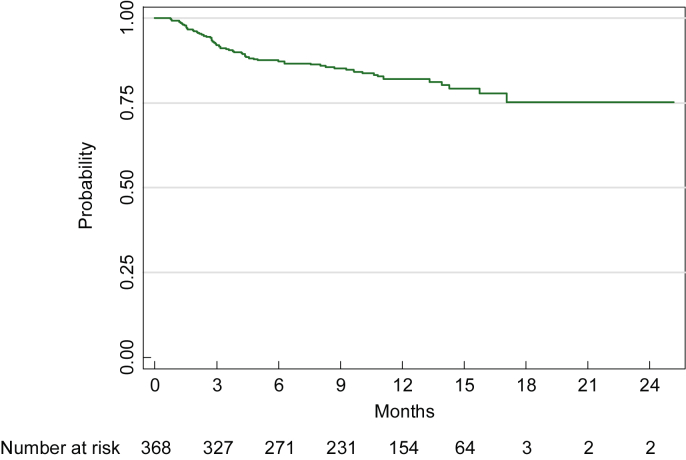1. Gardner S.D., Field A.M., Coleman D.V., Hulme B.. New human papovavirus (B.K.) isolated from urine after renal transplantation.
Lancet 19:1971;1253–1257.

2. Egli A., Infanti L., Dumoulin A., Buser A., Samaridis J., Stebler C., Gosert R., Hirsch H.H.. Prevalence of polyomavirus BK and JC infection and replication in 400 healthy blood donors.
J Infect Dis 199:2009;837–846.

3. Knowles W.A., Pipkin P., Andrews N., Vyse A., Minor P., Brown D.W., Miller E.. Population-based study of antibody to the human polyomaviruses BKV and JCV and the simian polyomavirus SV40.
J Med Virol 71:2003;115–123.

4. Polo C., Pérez J.L., Mielnichuck A., Fedele C.G., Niubò J., Tenorio A.. Prevalence and patterns of polyomavirus urinary excretion in immunocompetent adults and children.
Clin Microbiol Infect 10:2004;640–644.


5. Zhong S., Zheng H., Suzuki M., Chen Q., Ikegaya H., Aoki N., Usuku S., Kobayashi N., Nukuzuma S., Yasuda Y., Kuniyoshi N., Yogo Y., Kitamura T.. Age-related urinary excretion of BK polyomavirus by nonimmunocompromised individuals.
J Clin Microbiol 45:2007;193–198.

6. Kuypers D.R.. Management of polyomavirus-associated nephropathy in renal transplant recipients.
Nat Rev Nephrol 8:2012;390–402.


7. Masutani K.. Current problems in screening, diagnosis and treatment of polyomavirus BK nephropathy.
Nephrology (Carlton) 19(Suppl 3):2014;S11–S16.

8. Babel N., Volk H., Reinke P.. BK polyomavirus infection and nephropathy: the virus-immune system interplay.
Nat Rev Nephrol 7:2011;399–406.


9. Hirsch H.H., Brennan D.C., Drachenberg C.B., Ginevri F., Gordon J., Limaye A.P., Mihatsch M.J., Nickeleit V., Ramos E., Randhawa P., Shapiro R., Steiger J., Suthanthiran M., Trofe J.. Polyomavirus-associated nephropathy in renal transplantation: interdisciplinary analyses and recommendations.
Transplantation 79:2005;1277–1286.


10. Johnston O., Jaswal D., Gill J.S., Doucette S., Fergusson D.A., Knoll G.A.. Treatment of polyomavirus infection in kidney transplant recipients: a systematic review.
Transplantation 89:2010;1057–1070.


11. Ramos E., Drachenberg C.B., Wali R., Hirsch H.H.. The decade of polyomavirus BK-associated nephropathy: state of affairs.
Transplantation 87:2009;621–630.


12. Dharnidharka V.R., Abdulnour H.A., Araya C.E.. The BK virus in renal transplant recipients—review of pathogenesis, diagnosis, and treatment.
Pediatr Nephrol 26:2011;1763–1774.


13. Babel N., Fendt J., Karaivanov S., Bold G., Arnold S., Sefrin A., Lieske E., Hoffzimmer M., Dziubianau M., Bethke N., Meisel C., Grütz G., Reinke P.. Sustained BK viruria as an early marker for the development of BKV-associated nephropathy: analysis of 4128 urine and serum samples.
Transplantation 88:2009;89–95.


14. Hirsch H.H., Randhawa P.; the AST Infectious Disease Community of Practice. BK polyomavirus in solid organ transplantation.
Am J Transplant 13(Suppl 4):2013;179–188.

15. Kidney Disease Improving Global Outcomes (KDIGO) Transplant Working Group . KDIGO clinical practice guidelines for the care of kidney transplant recipients. Am J Transplant 9(Suppl 3):2009;S44–S46.
16. Viscount H.B., Eid A.J., Espy M.J., Griffin M.D., Thomsen K.M., Harmsen W.S., Razonable R.R., Smith T.F.. Polyomavirus polymerase chain reaction as a surrogate marker of polyomavirus-associated nephropathy.
Transplantation 84:2007;340–345.


17. Therneau T.M., Grambsch P.M.. Modeling Survival Data: Extending the Cox Model. 1st edition. 2000. Springer Science & Business Media; New York.
18. Drachenberg C.B., Papadimitriou J.C., Hirsch H.H., Wali R., Crowder C., Nogueira J., Cangro C.B., Mendley S., Mian A., Ramos E.. Histological patterns of polyomavirus nephropathy: correlation with graft outcome and viral load.
Am J Transplant 4:2004;2082–2092.


19. Seemayer C.A., Seemayer N.H., Dürmüller U., Gudat F., Schaub S., Hirsch H.H., Mihatsch M.J.. BK virus large T and VP-1 expression in infected human renal allografts.
Nephrol Dial Transplant 23:2008;3752–3761.



20. Hoffman N.G., Cook L., Atienza E.E., Limaye A.P., Jerome K.R.. Marked variability of BK virus load measurement using quantitative real-time PCR among commonly used assays.
J Clin Microbiol 46:2008;2671–2680.

21. Bechert C.J., Schnadig V.J., Payne D.A., Dong J.. Monitoring of BK viral load in renal allograft recipients by real-time PCR assays.
Am J Clin Pathol 133:2010;242–250.


22. Brennan D.C., Agha I., Bohl D.L., Schnitzler M.A., Hardinger K.L., Lockwood M., Torrence S., Schuessler R., Roby T., Gaudreault-Keener M., Storch G.A.. Incidence of BK with tacrolimus versus cyclosporine and impact of preemptive immunosuppression reduction.
Am J Transplant 5:2005;582–594.


23. Wadei H.M., Rule A.D., Lewin M., Mahale A.S., Khamash H.A., Schwab T.R., Gloor J.M., Textor S.C., Fidler M.E., Lager D.J., Larson T.S., Stegall M.D., Cosio F.G., Griffin M.D.. Kidney transplant function and histological clearance of virus following diagnosis of polyomavirus-associated nephropathy (PVAN).
Am J Transplant 6:2006;1025–1032.


24. Vasudev B., Hariharan S., Hussain S.A., Zhu Y.R., Bresnahan B.A., Cohen E.P.. BK virus nephritis: risk factors, timing, and outcome in renal transplant recipients.
Kidney Int 68:2005;1834–1839.


25. Alméras C., Foulongne V., Garrigue V., Szwarc I., Vetromile F., Segondy M., Mourad G.. Does reduction in immunosuppression in viremic patients prevent BK virus nephropathy in de novo renal transplant recipients? A prospective study.
Transplantation 85:2008;1099–1104.


26. Hirsch H.H., Knowles W., Dickenmann M., Passweg J., Klimkait T., Mihatsch M.J., Steiger J.. Prospective study of polyomavirus type BK replication and nephropathy in renal-transplant recipients.
N Eng J Med 347:2002;488–496.

27. Masutani K., Shapiro R., Basu A., Tan H., Ninomiya T., Randhawa P.. Putative episodes of T-cell-mediated rejection in patients with sustained BK viruria but no viremia.
Transplantation 94:2012;43–49.








 PDF Links
PDF Links PubReader
PubReader Full text via DOI
Full text via DOI Download Citation
Download Citation Supplement 1
Supplement 1 Print
Print
















